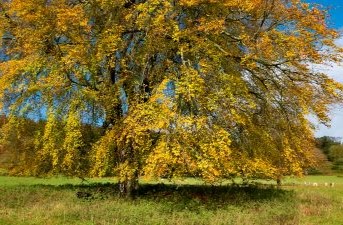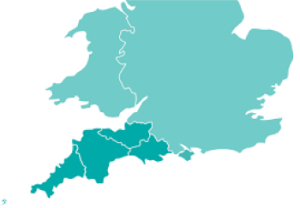Major new forest for the South West will create green jobs and trigger investment

The South West has been chosen as the site of a huge new national forest, the first for more than 30 years, it was announced today in a major boost for the region’s transition to a net zero economy.
The Western Forest, which will stretch from the Cotswolds to the Mendips, will bring about “landscape-scale change and green investment in people and nature”, the government said.
In its first five years, at least 2,500 hectares of new woodland and other habitats will be planted, with 20m new trees by 2050.
Those behind the project also said the aim was to maximise its social, economic and environmental benefits, including creating new green jobs, boosting tourism and helping achieve net zero by 2050.
In addition, it will help to deliver the new homes and infrastructure needed across the area as well as creating publicly accessible green space and mitigating flood risks for new communities.
In its rural areas, the forest will work with farmers in a predominately agricultural landscape to demonstrate how trees on farms and farm woodlands can deliver multiple environmental, economic and social benefits without compromising food production.
With more than 2.5m people living on its doorstep, the new forest will bring a collaborative approach to nature recovery, working with landowners, businesses and local communities to bring it to life.
It is also aimed at improving the well-being of local communities and creating “transformational programmes” focused on volunteering, health, education and access.
The pioneering project will be spearheaded by the Forest of Avon, one of England’s Community Forests supported by up to £7.5m of government funding over five years.
It is the result of a successful regional partnership bid led by the Forest of Avon with support from the Bristol-based Natural History Consortium, the region’s councils and Great Western Community Forest – with more than 40 organisations lending their support, including the West of England Combined Authority (WECA).
These organisations say it will bring communities and woodlands closer together as part of the Government’s Plan for Change and help England reach its target of increasing woodland cover to 16.5% by 2050.
It will also support the region’s net zero commitments while being an important step in achieving the Government’s manifesto commitment to build three new national forests this parliament.
In addition, it will support the Government’s nature targets, including halting the decline of species and protecting 30% of land for nature.
Five priority areas will be created from the rolling hills of the Cotswold National Landscape and Mendips to vibrant urban centres such as Bristol, Gloucester and Swindon.
Alongside accelerating tree-planting in local areas, the project will work to revitalise existing woodlands and other important habitats to create a forest network for people and wildlife and bring woodlands closer to where people live.
The forests will also work with both rural and urban communities to create transformational programmes focused on volunteering, health, education and access.
Mayor of the West of England Dan Norris, who leads WECA, said he was “extremely proud” that the region had been chosen to be the home of the very first new national forest in 30 years.
“We beat off very stiff competition because of our impressive record of success in planting trees locally, our excellent partnership working, and the huge scale of our ambition,” he added.
“This is a massive vote of confidence in the West and puts us at the forefront of a greener, more sustainable future.
“The Western Forest will not only provide homes for our local wildlife but also places of solace, adventure, and inspiration for people from across the West of England and beyond, now, and just as importantly, for the generations to come.”
Forest of Avon Trust chief executive Alex Stone said the project would “enhance landscapes for all to enjoy, improving the lives of our 2.5m residents and visitors to the region”.
Alex added: “The Western Forest will enhance, connect and improve our urban and rural landscapes, support investment into the region, create jobs and skills opportunities and bring the endless benefits we get back from planting and caring for our trees.”
Natural History Consortium chief executive Savita Willmott said people and wellbeing would be at the heart of the transformation plans.
“Our priorities for improving access to nature will boost health as well provide thousands of opportunities for building green skills, volunteering, and supporting the regional economy in local areas. We can’t wait to get started,” she added.
Planting 20m trees, including oak, field maple, and sycamore, by 2050 will mean that they could absorb around 2.5m tonnes of carbon dioxide and also help reach the Government’s net zero and nature targets, including halting the decline of species and protecting 30% of land for nature by 2030.









